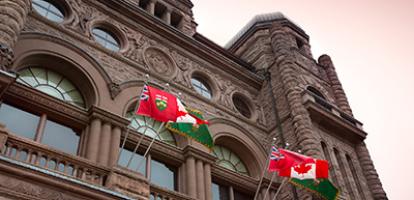Published in the Telegraph-Journal on January 16, 2015
By: William Robson, Colin Busby, and Aaron Jacobs
Colin Busby William Robson and Aaron Jacobs are all part of the C.D. Howe Institute.
New Brunswick may be the Canadian province that has shown the most willingness to face up to its demographic challenges. Reforming pensions is never easy, but New Brunswick’s recent moves stand out for their clear-sightedness about the problems ahead. So perhaps New Brunswick can lead the way in the next major demographic challenge facing Canada: the squeeze rising healthcare costs will put on the provincial budget, and the next generation.
Like other Canadian provinces, but more acutely than most, New Brunswick faces a looming fiscal challenge. It has the fastest-aging population in the country, which will complicate the province’s finances in two ways – by slowing revenue growth on one hand and boosting healthcare expenses on the other.
Middle-of-the-road demographic projections say that New Brunswick’s traditional-age workforce will shrink by about one per cent each year for the next five decades. That is unprecedented in history, and will dampen economic growth, and especially the personal income tax revenues that are so important in the provincial budget.
At the same time, aging will raise public expenditures, mainly through the healthcare budget.
The average health care costs of someone in their 70s are almost double those for someone in their 50s, and almost four times those for someone in their teenage years. In addition to the cost of medical technologies, drugs and salaries, the impact of aging on health costs has historically been about one percentage point each year – not a small amount when it compounds over many decades.
In a report for the C.D. Howe Institute, we estimated the size of New Brunswick’s future health financing needs, and the news is not good: over the next 50 years healthcare’s draw on provincial income should more than double, rising from its current level of nine per cent to about 21 per cent by 2064.
Looking at this another way – a parallel with the pension liabilities that have been such a hot topic in the province recently – the New Brunswick government would need income-earning assets of $68 billion to cover those rising costs without hiking in taxes. Taking account of other demographically sensitive programs does not change the picture: although the number of students will fall, rising costs per student mean no relief for the provincial budget from education.
Provinces typically look to the federal government for help with their fiscal problems. But these pressures exist across the country. The provinces, including New Brunswick, tax exactly the same revenue sources as Ottawa – personal incomes, corporate profits and consumer spending. Much of the money Ottawa already transfers to the provinces simply reflects the degree to which the federal government taxes these sources – the more logical solution would be for New Brunswick to tax a larger share, rather than asking the federal government to do it for them.
Starting in 2006, the federal government lowered its tax share by lowering the GST by two percentage points. If it needs more revenue, the province of New Brunswick could take up this tax room today.
For obvious political reasons, however, the province would rather Ottawa collect the taxes for provincial programs and redistribute them back to them. But this means that New Brunswickers are less able to hold their provincial government to account for the performance of publicly funded healthcare than if the province is raising, and is seen to be raising, more of the necessary funds itself.
A better option to mitigate future fiscal pressures would be for baby boomers to prefund some of their future healthcare needs. Some programs, such as long-term care for the elderly, are like pensions in that many people can prepare for predictable expenses by building a nest egg during their younger years. Changes along these lines could be modelled after the Canada Pension Plan reforms in the mid-1990s, where additional contributions today would be invested and drawn down upon in the future.
Finally, New Brunswick can and should improve the delivery of healthcare and get more efficient. Some of the most promising suggestions include: scope-of-practice changes that would allow less expensive providers such as pharmacists and nurse practitioners to offer services currently, and unnecessarily, performed by more expensive physicians; better use of information technology, particularly in coordinating patient continuing care; and, more emphasis on primary and non-institutional care, and so on.
New Brunswick’s pension battles left scars, and the prospect of dealing with another major demographic and fiscal challenge so soon may not appeal to everyone. But willingness to face reality is a major asset, and healthcare offers another opportunity for New Brunswick to lead the country. As with pensions, the sooner reforms to healthcare proceed, the more robust New Brunswick’s finances will be in the years and decades ahead.




